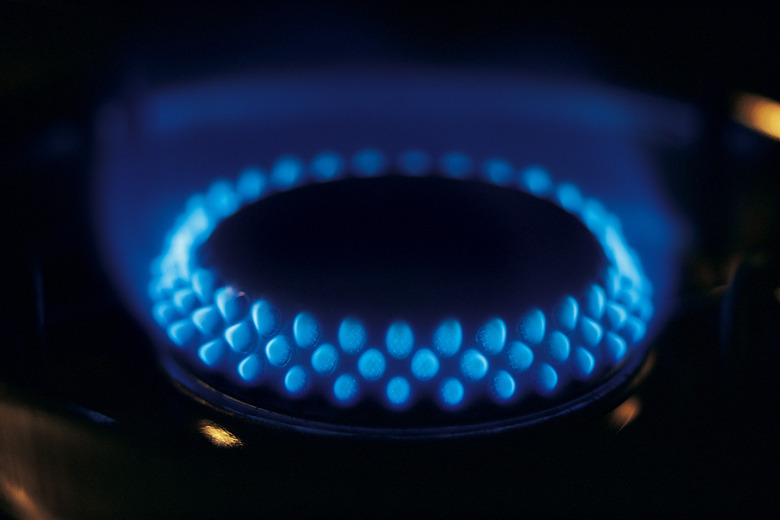Typical BTUs Of A Gas Stove
When it comes to selecting stoves, many professional chefs and at-home cooking aficionados opt for gas. The measurement used for a stove's heating power is the BTU, or British Thermal Unit, and — gas stove BTUs vary across a wide range. The beauty of gas, and the reason for its popularity with cooks, is the fine control it gives as you adjust your heat from a bare minimum to an all-out blast of heat.
British Thermal Units
British Thermal Units
BTU is the internationally used and accepted measurement for heating capacity. Technically, 1 BTU equals the amount of heat required to raise the temperature of 1 pound of water by 1 degree Fahrenheit. The BTU capacity is listed on the labeling for the stove in stores and in the owner's manual for stoves and ranges.
It will typically be expressed as a range, with highest number indicating its maximum heat output and the lower number identifying the lowest you can go without having the flame extinguish itself.
Residential Gas Range BTUs
Residential Gas Range BTUs
Residential gas stoves range in BTU power from 400 to 18,000 BTUs. In general, the lower the flame the lower the BTU output, and the higher the flame, the higher the BTU output. For example, a low flame on the stove may only use 400 BTUs even though the burner might have an 18,000 BTU capacity.
Many stoves have burners with differing BTU capacities. For example, a four-burner gas range might have two burners with a 9,000 BTU capacity, one burner with a 12,000 BTU capacity and one burner with a 5,000 BTU capacity. In most cases, all burners on the stove adjust down to about 1,000 BTUs for low heat and simmering, which is about 135 degrees Fahrenheit. This gives cooks the opportunity to choose an appropriate burner and heat setting for each pot on the stove.
Professional-Style Gas Range BTUs
Professional-Style Gas Range BTUs
High-end gas stoves often draw on the visual style of professional, commercial-grade stoves. These typically have the highest BTU capacities available for residential use, with individual burners ranging from 12,000 to 22,000 BTUs or more at the high end. They also typically provide finer control and lower BTUs at the very lowest settings as well, giving cooks the greatest possible control over heat.
Commercial-style stoves generally have six or more burners, and often feature accessories such as griddle plates or specialized burners for indoor grilling. Another popular feature is a dedicated burner for simmering, which offers only low to moderate heat but gives extra control at low temperatures, for delicate dishes.
The Importance of Cooktop BTUs
The Importance of Cooktop BTUs
A gas stove with a high BTU capacity will produce high heat instantly. This quality is useful when executing techniques that require the cookware to heat rapidly, such as searing or using a wok. Combined with other burners at varying BTU capacities, you'll have access to the right intensity of heat for almost any preparation.
The biggest single advantage of high cooktop BTUs isn't for advanced gourmet techniques, but the more mundane task of bringing liquids to a boil. It takes surprisingly long to boil water, and usually your meal doesn't start cooking until it's up to temperature. A higher-BTU stove will get you there more quickly.
